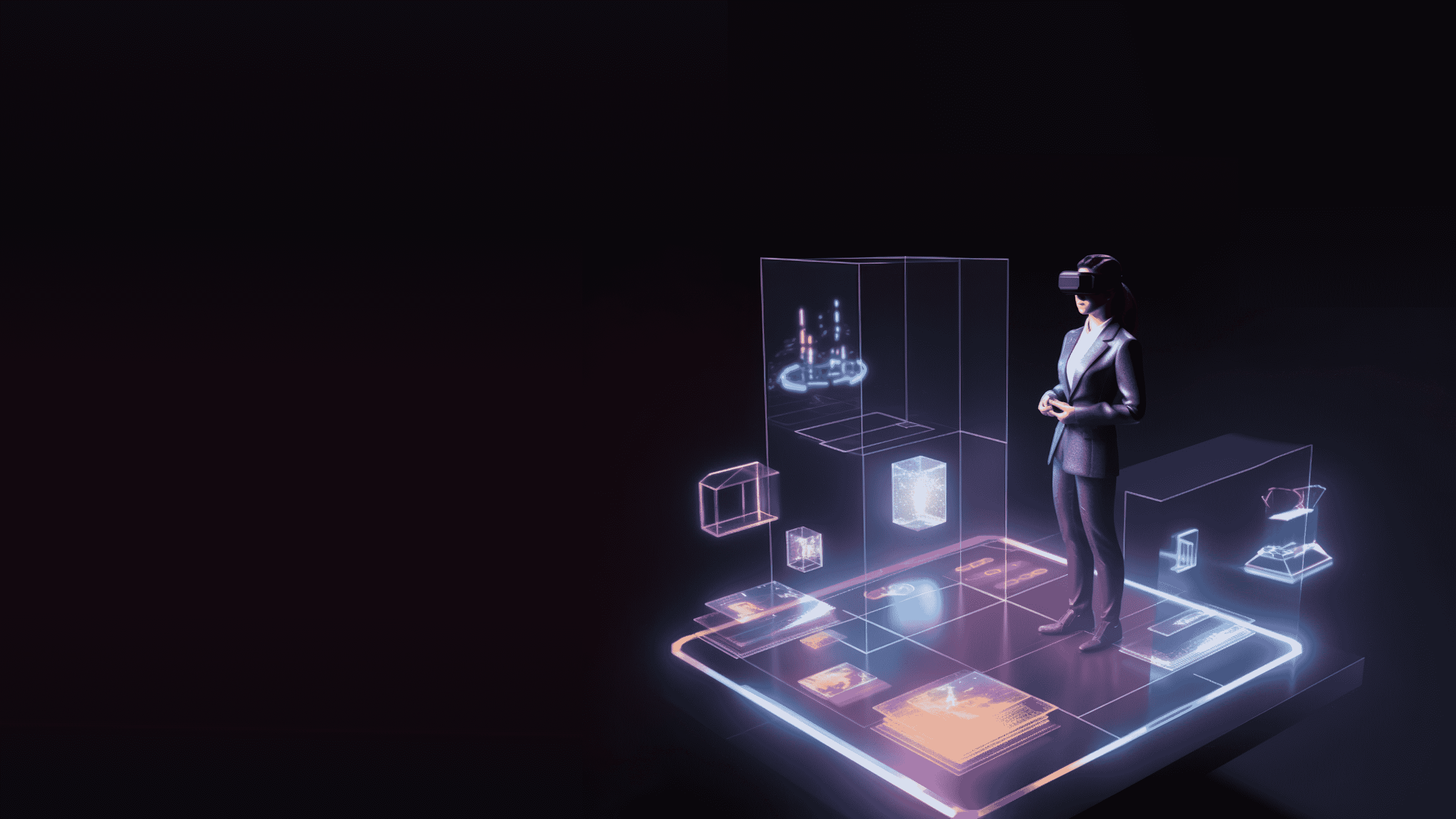The Future of Product Development: Merging Physical and Digital Experiences

Product development is undergoing a transformative shift as physical and digital experiences converge, driven by advances in technology and changing consumer expectations. This blog explores the latest trends, innovative strategies, and inspiring examples of startups leading the way in creating seamless and immersive product experiences.
Exploring New Frontiers in Product Development
Product development is continuously evolving, with new technologies emerging to enhance the creation, testing, and delivery of products. Let's delve into some of the latest innovations reshaping the industry.
Revolutionizing Design with Holographic Displays
Holographic displays are transforming how products are visualized and interacted with during development. By projecting three-dimensional images, these displays allow designers and engineers to examine and manipulate virtual prototypes in real time. This technology speeds up the prototyping process and allows for more detailed and accurate assessments of product designs.
HoloVision's Leap Forward
HoloVision employs holographic display technology to design consumer electronics. By using 3D projections, their team can view and modify designs instantly, leading to more efficient prototyping and faster iterations. This approach has significantly reduced the time and cost associated with traditional prototyping methods, allowing HoloVision to bring innovative products to market more quickly.
Precision Manufacturing with Advanced Robotics
Advanced robotics and automation are pushing the boundaries of what's possible in manufacturing. These technologies enhance precision, efficiency, and scalability, allowing for the production of complex products with minimal human intervention. Robotics can handle repetitive tasks accurately, while automation systems streamline the production process, reducing errors and increasing efficiency.
RoboFab's High-Tech Production Line
RoboFab utilizes advanced robotics in its production lines, enhancing the manufacturing process of medical devices with precision and efficiency. The robots handle intricate assembly tasks, ensuring high precision and consistency while freeing human workers to focus on more strategic activities. By automating these processes, RoboFab can maintain high-quality standards while increasing production capacity to meet growing market demands.
Personalized Healthcare with Bioprinting
Bioprinting, the process of creating tissue-like structures using 3D printing technology, is making waves in the biomedical and healthcare industries. This technology has the potential to revolutionize product development by enabling the creation of custom biological products. Bioprinting can produce complex tissue structures that mimic the properties of natural tissues, opening up new possibilities for medical treatments and personalized healthcare solutions.
Organovo's Custom Medical Implants
Organovo utilizes bioprinting technology to develop personalized medical implants. By printing tissue-like materials tailored to individual patients, Organovo is pioneering advancements in regenerative medicine and custom healthcare solutions. Their bioprinted implants have shown promising results in clinical trials, offering patients more effective and personalized treatment options.
Unlocking Potential with Metamaterials
Metamaterials, artificially engineered materials with properties not found in nature, are opening new possibilities in product development. These materials can manipulate electromagnetic waves, sound, and heat in novel ways, leading to innovative applications across various industries. Metamaterials can be designed to exhibit unique characteristics, such as negative refraction or cloaking, which can be leveraged for advanced technological applications.
HyperTech Research's Advanced Cooling Systems
HyperTech Research utilizes metamaterials to develop advanced cooling systems for electronics. By manipulating heat and electromagnetic waves, HyperTech Research is pioneering advancements in thermal management solutions. Their metamaterial-based cooling systems have shown promising results in enhancing heat dissipation and improving the performance and lifespan of electronic devices.
Embracing Sustainability with Innovative Materials
Innovation in sustainable materials is crucial as companies strive to reduce their environmental footprint. New materials that are biodegradable, recyclable, or derived from renewable sources are being developed to create eco-friendly products. Sustainable materials not only help reduce waste and pollution but also contribute to the development of a circular economy, where products and materials are reused and recycled to minimize environmental impact.
Eileen Fisher's Eco-Friendly Fabrics
Eileen Fisher focuses on developing sustainable materials for the fashion industry. Their biodegradable fabrics and eco-friendly dyes set new standards for sustainability in apparel production, aligning with the growing demand for environmentally conscious products. Eileen Fisher's innovative materials are not only environmentally friendly but also offer superior performance and durability, making them a viable alternative to traditional textiles.
Enhancing Displays with Quantum Dots
Quantum dots are tiny semiconductor particles with distinct optical and electronic characteristics. They are used in various applications, from display technologies to solar cells, offering improved performance and energy efficiency. Quantum dots can be engineered to emit specific wavelengths of light, making them ideal for applications that require precise color control and high brightness.
Sony's Quantum Dot Displays
Sony incorporates quantum dot technology into its high-definition Triluminos displays. By using quantum dots, Sony's displays offer superior color accuracy and energy efficiency, providing a cutting-edge viewing experience that stands out in the market. Sony's Triluminos technology has gained popularity among consumers and industry professionals alike, thanks to its vibrant colors and low power consumption.
Transforming Logistics with Autonomous Supply Chains
The concept of autonomous supply chains involves using AI and IoT to create self-managing chains with minimal human intervention. This innovation enhances efficiency, reduces errors, and increases the resilience of supply networks. Autonomous supply chains can adapt to changing conditions in real time, optimizing inventory levels and ensuring timely deliveries.
UPS's Intelligent Logistics
UPS employs autonomous supply chain technology to manage inventory and distribution for its logistics operations. Their system uses AI to predict demand and optimize routes, ensuring timely deliveries and reducing operational costs. By leveraging AI and IoT, UPS provides a more reliable and efficient supply chain solution, helping its clients stay competitive in a fast-paced market.
Immersive Development with Mixed Reality
Mixed Reality (MR), which combines elements of both AR and VR, is emerging as a powerful tool in product development. MR allows users to interact with digital content in a real-world environment, providing a more immersive and interactive experience. This technology can be used for various applications, from design reviews to virtual training, enhancing the overall development process.
Porsche's AR/VR Training Programs
Porsche uses augmented and virtual reality to develop training programs for the automotive industry. By creating realistic AR/VR simulations, they provide hands-on training experiences that help technicians and engineers learn new skills and procedures. Porsche's AR/VR solutions have been shown to improve training outcomes and reduce the time required to onboard new employees.
Implications for Industries and Society
The integration of these advanced technologies into product development is not just transforming how products are created but also has far-reaching implications across various industries and society as a whole.
Industrial Transformation
Industries are experiencing a revolution as these technologies enable more efficient, precise, and sustainable production processes. Manufacturing sectors are particularly benefiting from automation and robotics, leading to higher-quality products and reduced production costs. Using sustainable materials drives industries toward more environmentally friendly practices and is crucial for meeting global sustainability goals.
Healthcare Advancements
In healthcare, bioprinting and mixed reality are leading the way for personalized medicine and improved training for medical professionals. Bioprinting can lead to breakthroughs in regenerative medicine, potentially reducing the need for organ transplants and offering new treatment options for patients with complex conditions. Mixed reality enhances medical training, providing realistic simulations that prepare healthcare professionals for real-world scenarios.
Environmental Impact
The focus on sustainability compels industries to adopt eco-friendly practices and materials, reducing the overall environmental footprint. This shift is crucial as businesses and consumers become more conscious of their impact on the planet. The emergence of biodegradable and recyclable materials supports the circular economy, where products are designed for longevity, reuse, and recycling.
Consumer Experience
For consumers, these technologies enhance product quality, customization, and user experience. Holographic displays and quantum dots improve the visual appeal and functionality of consumer electronics. Autonomous supply chains ensure timely delivery of products, enhancing customer satisfaction. As products become more personalized and sustainable, consumer trust and loyalty are expected to increase.
The future of product development lies in seamlessly integrating physical and digital experiences. By utilizing cutting-edge technologies such as holographic displays, advanced robotics, bioprinting, metamaterials, sustainable materials, quantum dots, autonomous supply chains, and mixed reality, companies can innovate and meet evolving consumer demands.
Embracing these trends is crucial for staying competitive and driving growth. The shift towards merging physical and digital experiences marks a fundamental evolution in product development, enabling organizations to deliver exceptional digital experiences to their customers and stakeholders. As these technologies continue to advance, businesses must stay ahead of the curve to remain relevant and thrive in the ever-changing market landscape.
Curious about how immersive technologies are shaping the workforce? Discover the transformative impact of AR and VR on employee development in our next Insight: The Rise of Immersive Training: How AR/VR Will Shape Employee Development in 2024. Explore how these advancements are revolutionizing training and development across industries.




